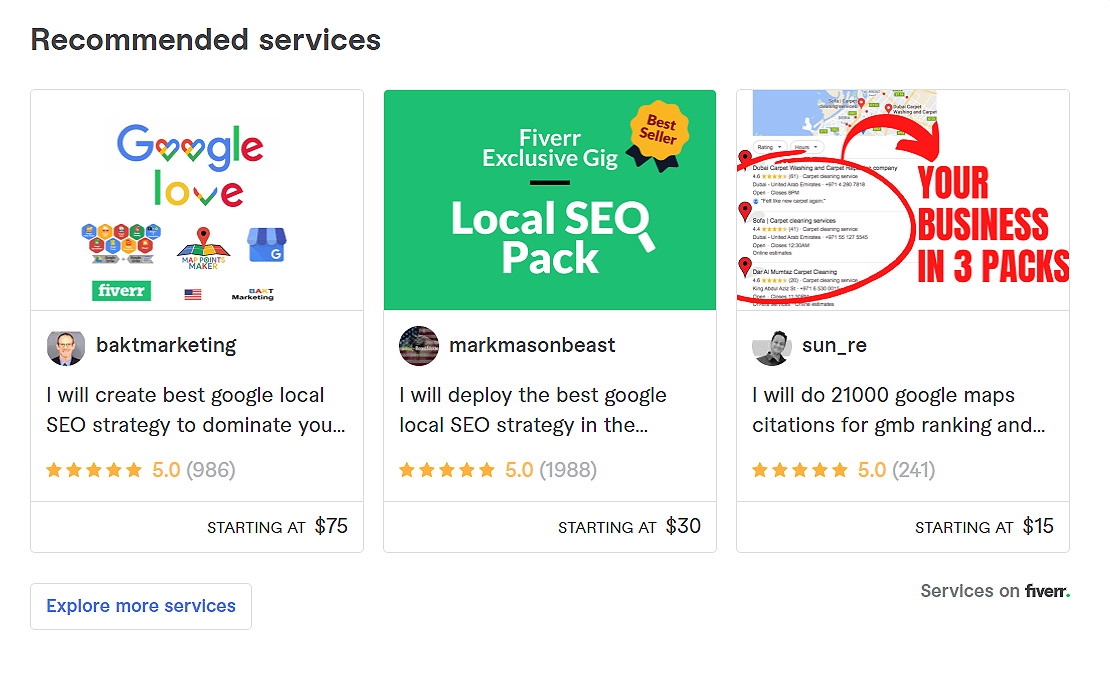Comparison Local SEO vs General SEO October? | Checkout Best Local SEO Services Online 2023
Best Local SEO Services Online | Checkout NOW
As businesses strive to establish a robust online presence, the choice between Local SEO and General SEO becomes crucial. Both approaches have distinct advantages and play a significant role in different marketing contexts. So let us read more about Comparison Local SEO vs General SEO October
So What is the Comparison Local SEO vs General SEO October?
In the rapidly evolving landscape of digital marketing, search engine optimization (SEO) has emerged as a pivotal strategy for enhancing online visibility and driving organic traffic to websites.
In this Comparison Local SEO vs General SEO October article, we delve into the nuances of Local SEO and General SEO, exploring their key differences, benefits, and how to determine which strategy suits your business goals.
Understanding Local SEO
Local SEO is a specialized form of search engine optimization tailored for local businesses looking to connect with their target audience within a specific geographic area.
So as per this Comparison Local SEO vs General SEO October article, The primary goal of Local SEO is to ensure that businesses appear prominently in local search results when users are looking for products or services nearby.
This strategy is especially beneficial for brick-and-mortar stores, restaurants, and service-based enterprises.
Key Elements of Local SEO:
- Google My Business (GMB): Setting up and optimizing a GMB profile is fundamental for Local SEO. It provides essential business information like address, contact details, working hours, and customer reviews, making it easier for potential customers to find and connect with the business.
- Local Citations: Consistent listings across various online directories, such as Yelp, Yellow Pages, and industry-specific platforms, establish credibility and contribute to higher local search rankings.
- NAP Consistency: NAP (Name, Address, Phone Number) consistency across all online platforms is crucial for building trust with both users and search engines.
- Localized Content: So as guided in this Comparison Local SEO vs General SEO October article, Creating content that resonates with the local audience helps establish the business as an authority in the region.
Benefits of Local SEO:
- Targeted Audience: Local SEO allows businesses to target users in their vicinity who are actively seeking their products or services.
- Higher Conversion Rates: Local searches often lead to higher conversion rates, as users are more likely to take immediate action.
- Google’s Local Pack: So based on this Comparison Local SEO vs General SEO October aerticle, Ranking in the Local Pack – the top three local search results showcased prominently on Google – can significantly boost visibility and traffic.
Understanding General SEO
General SEO, often referred to as Organic SEO, is the broader approach to optimizing websites for search engines on a global or national scale.
It involves optimizing a website’s structure, content, and technical aspects to improve its visibility in organic (non-paid) search results. This approach is suitable for businesses that cater to a wider audience beyond their immediate locality.
Key Elements of General SEO:
- Keyword Research: Thorough keyword research is essential to identify relevant terms and phrases that users are searching for. These keywords guide content creation and optimization efforts.
- On-Page Optimization: So according to this Comparison Local SEO vs General SEO October article, This involves optimizing individual web pages for specific keywords, including meta tags, headings, content, and multimedia elements.
- Technical SEO: Ensuring a website’s technical aspects, such as site speed, mobile-friendliness, and structured data, are optimized for search engines.
- Backlink Building: Acquiring high-quality backlinks from reputable websites enhances a site’s authority and trustworthiness in the eyes of search engines.
Benefits of General SEO:
- Broad Reach: General SEO helps businesses tap into a larger audience base, enabling them to expand their reach and brand awareness.
- Long-Term Results: The efforts put into organic optimization yield long-lasting results, often outlasting the immediate effects of paid advertising.
- Authority Building: So considering this Comparison Local SEO vs General SEO October article, High-quality content and ethical link-building strategies can position a business as an authoritative resource in its industry.
Impact of Local SEO on Small Local Businesses Website
The choice between Local SEO and General SEO depends on the nature of the business, its target audience, and its growth goals.
- Local Businesses: If you operate a local business with a physical presence, focusing on Local SEO is critical. This strategy ensures that potential customers in your area can easily find and engage with your business.
- E-Commerce and National Brands: E-commerce businesses and national brands looking to reach a broader audience should prioritize General SEO. This approach allows them to compete on a larger scale and attract customers from various regions.
- Regional Services: Businesses that provide services across a specific region might benefit from a blend of both Local and General SEO strategies. This way, they can attract local clients while also expanding their reach to nearby areas.
Essential Ranking Strategies for Local SEO
Local SEO (Search Engine Optimization) is crucial for businesses that want to improve their visibility and attract customers in their local area. Here are some essential ranking strategies for local SEO:
- Google My Business Optimization: Claim and verify your Google My Business (GMB) listing. Fill out all the relevant information including business name, address, phone number, website, business hours, and description. Use accurate and consistent NAP (Name, Address, Phone) information across all online platforms.
- Local Keyword Research: Identify relevant local keywords that potential customers might use to find businesses like yours. Include location-specific keywords in your website content, meta tags, headings, and image alt text.
- On-Page SEO: Optimize your website’s on-page elements for local SEO. This includes optimizing title tags, meta descriptions, headings, and content with relevant local keywords.
- Localized Content: Create high-quality, localized content that resonates with your local audience. This can include blog posts, articles, videos, and infographics that address local topics, events, and news.
- Citation Building: Build consistent and accurate citations on local business directories, review sites, and social media platforms. Ensure that your NAP information is consistent across all citations.
- Online Reviews: Encourage satisfied customers to leave reviews on platforms like Google, Yelp, and Facebook. Respond to reviews, both positive and negative, to show your engagement and commitment to customer satisfaction.
- Local Link Building: Focus on acquiring high-quality local backlinks from reputable local websites, blogs, and news sources. This can improve your website’s authority and local relevance.
- Mobile-Friendly Website: Ensure that your website is responsive and optimized for mobile devices. Many local searches are performed on mobile devices, so a mobile-friendly site is crucial for a positive user experience.
- Schema Markup: Implement schema markup on your website to provide search engines with structured data about your business, such as address, phone number, business hours, and reviews. This can enhance your chances of appearing in local search results.
- Local Social Media Engagement: Be active on local social media platforms. Engage with your local community by sharing relevant content, participating in discussions, and responding to comments and messages.
- Geo-Targeted Landing Pages: If you serve multiple local areas, create dedicated landing pages for each location with localized content and keywords.
- Local Events and Sponsorships: Participate in local events, sponsorships, and community initiatives. This not only helps you connect with the local community but also provides opportunities for local mentions and backlinks.
- Regular Updates: Keep your website and online profiles updated with accurate information. Regularly update your GMB listing with posts, photos, and updates about your business.
- Monitor Analytics: Use tools like Google Analytics and Google Search Console to monitor your local SEO efforts. Track key metrics such as organic traffic, keyword rankings, click-through rates, and user engagement.
- Competitor Analysis: Analyze the local SEO strategies of your competitors to identify opportunities and gaps in your approach.
Remember that local SEO is an ongoing process. Consistency, accuracy, and genuine engagement with your local community are key to building a strong local online presence.
Conclusion About Comparison Local SEO vs General SEO October
In the ever-evolving realm of SEO, the choice between Local SEO and General SEO hinges on the unique goals and nature of a business. Local SEO caters to businesses looking to connect with their immediate community, while General SEO is ideal for those seeking a broader reach.
By understanding the nuances of each approach and tailoring their strategies accordingly, businesses can harness the power of SEO to enhance their online presence and drive sustainable organic traffic.
Regardless of the chosen approach, investing in a well-rounded SEO strategy remains a cornerstone of digital success in today’s competitive landscape. So this concludes the article about Comparison Local SEO vs General SEO October.

